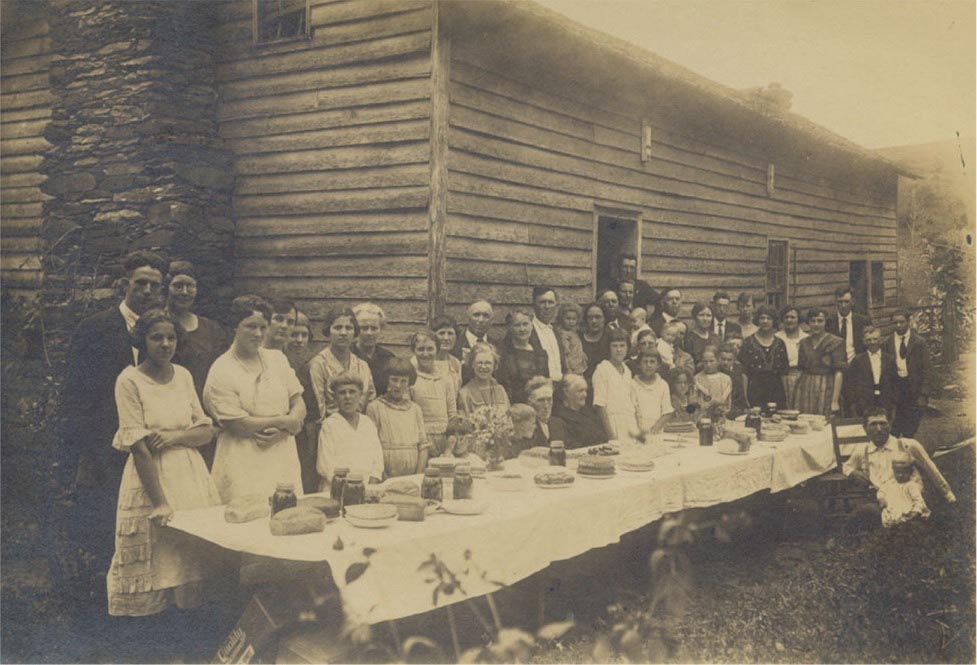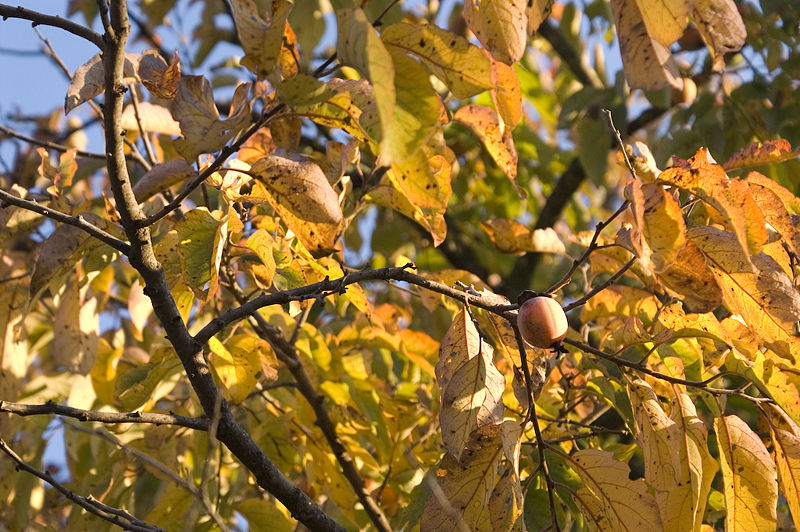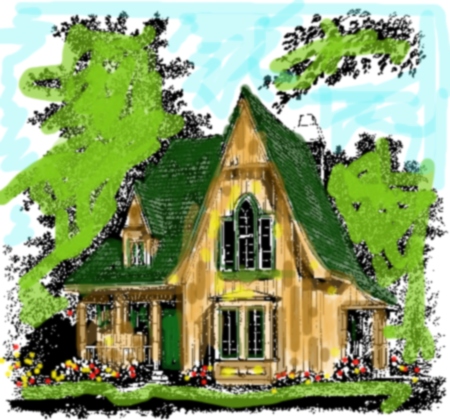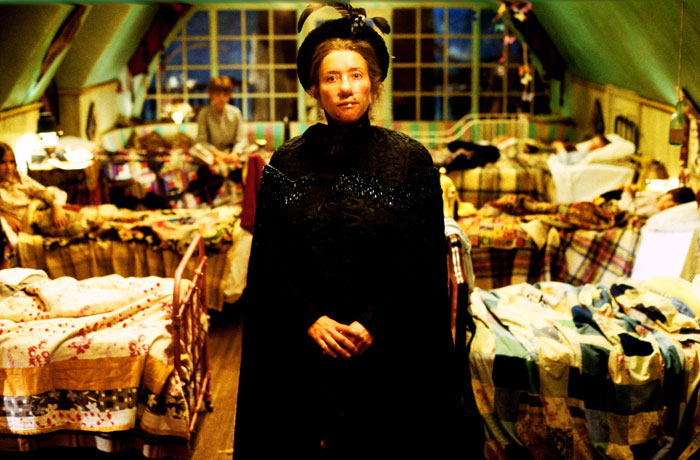
This old family photograph was taken around 1921, around the same time the book below was published. It is a family reunion at the home of my great-great grandparents, William Ira Jackson and Martha Marshall Jackson, in Carroll County, Virginia. They are the old couple seated at the center of the table. My father, Sanford Clay Dalton, is the boy whose head is visible just to Grandpa Jackson’s right. The Jacksons were my paternal grandmother’s grandparents.
Here are a few paragraphs from The Southern Highlander and His Homeland (John C. Campbell, New York, The Russell Sage Foundation, 1921). A guest (no doubt the author) stops overnight while traveling through the Highlands. He does not give a specific location. Perhaps he intends this scene as a synthesis:
“One who has enjoyed for a night the hospitality of a more prosperous family in the remote Highlands, carries away with him a pleasing picture of the comfort and simplicity of such mountain life.
“Here, where the bottom land along the creek widens, he sees at the end of a day’s hard ride a cluster of low gray buildings flanked by gnarled and untrimmed apple trees and backed by an imposing row of bee-gums…
“The room they enter is plainly furnished — a bare floor, a few chairs, and two or three beds. On the walls hang large crayon portraits of father and mother, with their first-born in their arms, together with pictures of the older brother or the little sister who died (now twenty years ago) enlarged from some crude photograph or tintype take by a traveling photographer. Often there is an organ, and the guests are eagerly urged to play.
“‘Washing up’ is generally relegated to the porch, and fresh water is drawn from the well or brought from the spring for this purpose.
“By this time the fire has been lighted in the big fireplace, and all gather about ‘to warm.’ Our host, it seems, is getting out some of his timber, and after a time he appears, followed at intervals by the sawmill hands who slip in unostentatiously to join the group about the hearth.
“Desultory conversation as to season, crops, and timber is interrupted by the announcement of supper, and all file out to the long table set in a room near the kitchen. Places are taken without ceremony. The host sits at the head. One of the guests is generally asked to return thanks. The hostess and the women who are helping her wait upon the men and upon the guests. There is an abundance to eat — pork, usually fried, and if it be hog-killing time, the backbone is offered as a great delicacy; fried potatoes, cornbread, hot biscuits, honey, apple-butter and jellies of various sorts, canned peaches, sorghum, coffee, sweet milk and buttermilk, fried chicken, and fried eggs. The meal is not interrupted by much conversation, and there is no lingering afterward. Eating is a matter of business.
“Adjournment to the fireplace is prompt, and the women, after eating their supper, betake themselves to the kitchen to clean up after the meal.”
Some notes out of my own experience of the Highlands, which goes back to the early 1950s about 30 years after the above photo was taken:
Campbell does not specify the season, but clearly it is cold weather. Based on what was served for supper and the availability of eggs, this was probably early spring. In the summer and fall, there certainly would have been fresh vegetables from the garden. So Campbell has described the winter diet of a prosperous family.
The pig’s value in the early South, and the importance of lard, cannot be emphasized too much. Though there was butter, the availability of butter would have varied from season to season, and according to the health and condition of the cows, and according to how many cows one had. Lard was the primary fat for Southern cuisine.
Even when I was a child, it was common for the woman of the house, and maybe one of her daughters, to not sit down for the meal if there were guests. Instead they would bustle around the table, and back and forth from the stove. The men, depending on the season, would guiltlessly retire to another room, or to the porch, after the meal, leaving the womenfolk to clean up the kitchen. I’ve witnessed this cleanup, though. It involved huge quantities of boiling water, either from kettles or from a reservoir in the wood-fired stove.
Technically, the musical instrument Campbell refers to is a harmonium, not an organ. The harmonium was a reed instrument driven by pedal-powered bellows. Harmoniums were quite common in the mountains. They were lighter than pianos, less expensive, easier to move and maintain.








